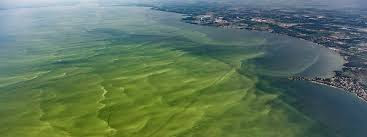Harmful Algal Blooms (HAB's) have started spreading all over Utah Lake.
What is a HAB
- HAB or cyano bloom is the term for the explosive growth of certain species of photosynthetic cyanobacteria, these then releasee toxins into the water.
- Cyanobacteria are already a part of the natural algae community seen in lakes and ponds, however, when conditions are favorable towards them, large rapid growth will start occurring.
What causes these Blooms
- Blooms actually happen naturally in initial mountain lakes and impaired urban waterways.
- In certain conditions (usually warmer waters with higher portions or phosphorus and nitrogen) blooms will happen more often.
- Scientists have noticed as global temperatures are getting higher blooms are increasing at a very high rate.
- Nitrogen and Phosphorus are the common pollutants that come from sewage treatment plants, erosion, and urban and agricultural runoff.
How to try and prevent Blooms
- Proper land management and investing in new technologies to treat wastewater can reduce the likelihood of blooms.
- Reduce the amount of fertilizer used on your lawn.
- Use phosphorus-free fertilizer when possible.
- Fix leaking septic systems.
- Use phosphorus-free detergents in dishwashers.
- Keep yard debris such as leaves or grass clippings from washing into storm drains.
- Pick up your pet's waste.
Are they dangerous
- Certain species of cyanobacteria (including Dolichospermum, Aphanizomenon, Cylindrospermopsis, Microsystis, and Ocillatoria) can release toxins into the water which can be dangerous to both humans and their pets.
- Some of these neurotoxins can cause immediate sickness or death while others can lead to long-term kidney or liver damage.
How to identify a cyanobacteria
- Cyanobacteria blooms often look like spilled paint or powdery green colors in lakes.- They are actually easy to identify I will put pictures.
Note - all of these are just notes for me to keep my thoughts straight and serve as notes for my research.
All of this information can be found on this website: https://extension.usu.edu/waterquality/Learnaboutlakes/hab/index

MUHAHAHAHHAHAHAHAHAHHA I HAVE UNSUNSCRIBED BECAUSE OF THE LACK OF CONTENT!!!!!!!!!!!!!!!!!
ReplyDelete